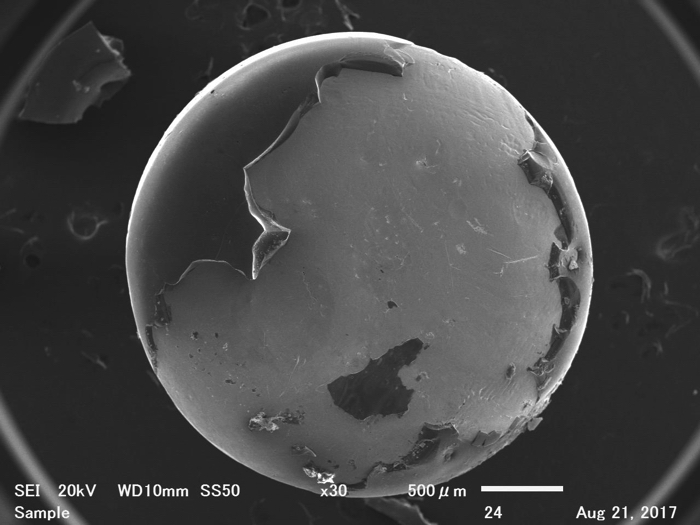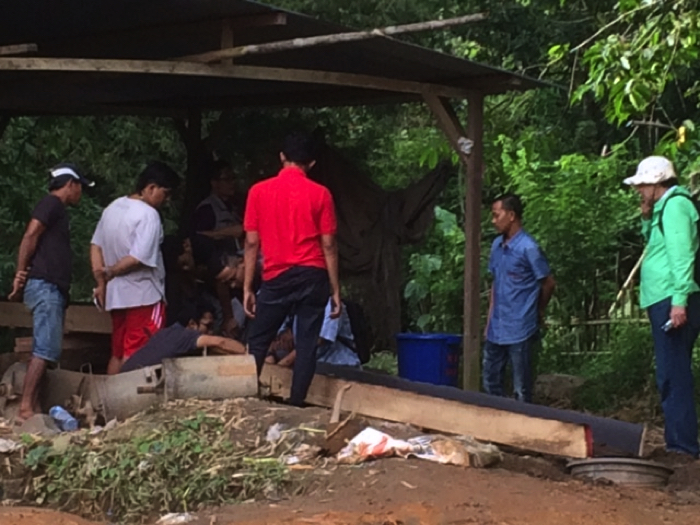- Project Leader : Takahi Sachiko (Akita University, Faculty of Education and Human Studies)
- Collaborators : Okamoto Masaaki (Kyoto University, Center for Southeast Asian Studies)
- : Hamada Fumio (Akita University, Emeritus Professor)
- : Ueda Haruhiko (Akita University, Faculty of Education and Human Studies)
- : Oh Kokyo (Center for Environmental Science in Saitama, National Science)
- : Irfan D. Prijambada (Gadjah Mada University, Faculty of Agriculture)
- : Himawan Tori Bayu Murti Petrus (Gadjah Mada University, Faculty of Engineering)
- : Ardiana Ekawant (Mataram University, Faculty of Medical Science)
- : I. Gede. Putu. Wirawan (Udayana University, Faculty of Agriculture)
- : Cho Tetugun (Niigata Agro-Food University, Faculty of Agro-Food Science)
Outline of Research
This research aims to prevent mercury damage caused by artisanal gold mining in order to contribute to a sustainable community. Reducing environmental pollution and health damage caused by mercury is indispensable to a secure and safe life.
First, we will investigate the health hazards of mercury to infants at local clinics and general hospitals, and consider measures to prevent the spread of health damage caused by the use of mercury. Second, we will research gold mining methods that do not use mercury and methods of purifying and recovering contaminated natural environments through phytoremediation.
Description
This research investigates the problems stemming from the use of mercury in many areas of Indonesia, and aims to reduce mercury use, prevent health damage, and recover contaminated environments. International cooperation to manage the risks during the entire life cycle of mercury is carried out through the Minamata Convention on Mercury and the Global Environmental Facility (GEF), which provide support for the implementation of treaties in developing countries. It is important to note that the Asia-Pacific Mercury Monitoring Network (APMMN) and the MOYAI Initiative for Networking Assessment and Strengthening (MINAS) support the GEF in Asian developing countries.
According to a report by the United Nations Environment Program, global mercury emissions into the atmosphere were estimated at 1921t in 2011. Mercury emitted from artisanal gold mining accounts for 37% of those emissions. Of the total amount of mercury used in gold mining, 75% is in the amalgam used in artisanal gold mining methods in developing countries; the remaining 25% is contained in wastewater and mine tailings.
This research will first develop measures to reduce mercury emissions and prevent health damage caused by mercury by developing methods to extract gold without the use of mercury. In recent years, it has been estimated that the birth rate of abnormal infants in gold mining areas is 5% and will continue to increase. Decreasing the potential for health damage to fetuses may also reduce the number of abortions. Secondly, this project will implement technical measures to remove mercury contaminants and rehabilitate contaminated soil, wastewater, and mine tailings through phytoremediation. This will be done based on the principle of “Low Cost, Low Technology, Low Risk.” Through these activities, this research project will ultimately contribute to building more safe and secure mining areas in Indonesia. Therefore the purposes of this research are as follows: 1) To develop a method of gold mining that does not use mercury in order to prevent the health hazards from mercury from affecting residents of artisanal gold mining sites, 2) To implement practical methods of rehabilitating environmental resources contaminated with mercury, and 3) To ultimately contribute to more safe and secure living.
 Fluorescent X-ray analysis of gold particles by the Borax Method (electronic microscope:JEOL JSM-6010LA) |
 Experiment of Borax Method |
